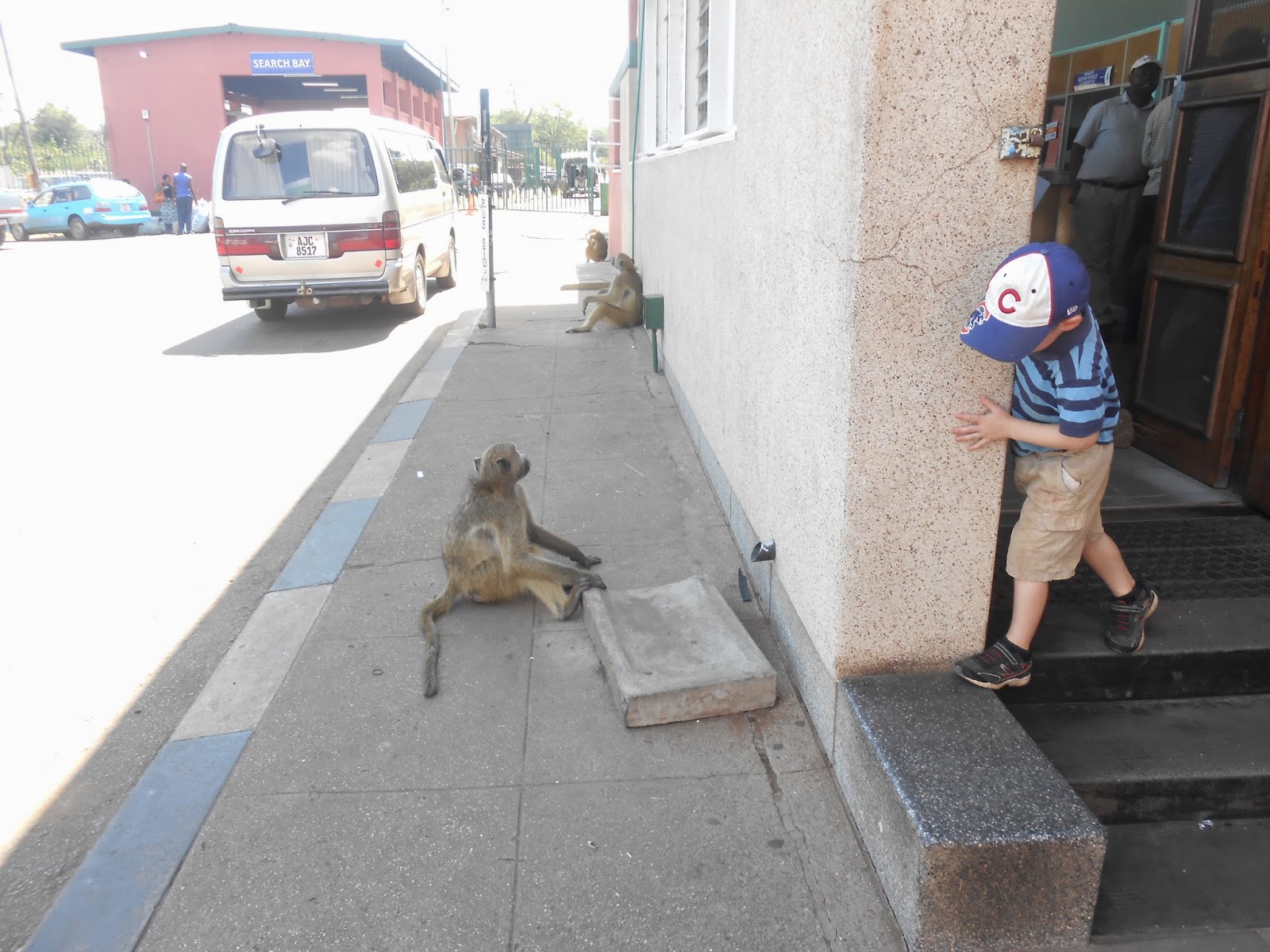There really is nothing quite like being trapped in an
eerily silent African forest with a four year old as the vehicle you are
sitting in slowly sinks in quicksand.
If you read my other blog, you’ve just heard this story.
Sorry for the repeat, but it is one story from Africa that will stick with me
for a long time. That’s because in what
can be described as one of my worst parenting moves thus far, our lack of taking
Africa seriously landed us in quite a pickle when we found ourselves stuck in
quick-sand miles from any other human being or cell-phone signal.

After a lovely English breakfast, my husband Kurt and I put
our four year old Jonas and Bostonian friend Lucy in the car for a lovely day
out in Matopos National Park. The plan
was to scout out the park’s most famous inhabitants –endangered rhino- and
other happy wildlife from the luxuries of our all-wheel drive Honda CRV. There are two sections of the park. One is highly visited, full of prehistoric rock
art, camping grounds, and the View of the World. The other, though known for its wildlife, is
less frequently visited. And by “less
frequently,” I mean we were the first of two cars to visit that morning. Also
important to note, the rangers at the front gate –not surprisingly- had no
vehicle.


Of course, we didn’t have sneakers or socks or
bugspray. For that matter, we didn’t have
a car-jack, a tow rope, cell reception, a shovel, flares, first-aid kit,
weapon, or a back-up plan of any sort.
Why would we possibly need those things? Just taking a drive in a national park before
a lovely afternoon at View of the World (another blog post to come). Thank God we had water, sunscreen, and a
sense of humor.
Kurt is an excellent driver, but no one could see this one coming…
We spent two hours wading in water and sinking in sand as we
moved every branch we could find into a hilarious sculpture that looked… ahem…
a lot like a still-sinking car. We dug.
We put our floor mats under the wheels. We spun. We pushed. We fried in the
sun. We taught Lucy about a parasitic snail found in water and promised to buy
her some medicine first thing when we returned home. We laughed when I spun the
wheels but forgot to roll up the windows. We sunk more. We watched our backs for lions
and leopards. We literally tried to pick up the car. We prayed and Jonas cried.



It was clear. We were not getting out without some major
help. The conundrum was whether to
abandon the car and walk through lion and leopard territory while trying to
urge a four-year old on, or to wait in a sinking car until A) someone whose
vehicle just happened to be equipped like a tow truck came upon us, or B) dark,
when the ranger station would hopefully realize we were missing and try to
borrow a vehicle to find us. Options
were not so good.

We looked at Jonas, who of course chose that particular
moment to desperately need to poo outside for his first time ever and decided
only God knew how long that would take.
We had to split up. Kurt and Lucy
went on foot with water in hand to bake in the sun as they headed for the park
entrance 15 kilometers away. Though we
didn’t make a dramatic thing of it, inside I had enough drama for a whole
Shakespeare company. There really is no
worse feeling than being left alone in the middle of the African bush with a
four year old needing entertainment and comfort while you run through scenarios
of what to do should a predator attack you and whether you will ever see your
husband and friend again. I quietly took
a photo as Kurt and Lucy walked away, in case it was the last time I saw
them. Then Jonas and I eventually sat to
bake in the sun inside our sinking car (fewer lions in there) and waited. Alone. I finally gave in and handed Jonas my iPad, creating a computer-addicted monster for the rest of our vacation in less than a minute. Desperate times call for desperate measures...

Kurt and Lucy made it about 8 kilometers before miraculously
coming upon the only other vehicle in the park, driven by none other than a
local church minister. Alleluia! Talk
about heaven-sent. Kurt’s only question? “Do you have a tow rope???”
It took an hour of maneuvering: pushing, pulling, moving,
jerking, and shifting loads. The tow
rope broke four times until, when we finally got out, the rope was so embedded
around our car hooks that it could never again be untied. We cut it with a knife
under the car, dragging a foot-long section of rope during the rest of our week
until our gardener spent over a half hour cutting it loose from the
undercarriage of the car when we returned home. Whenever we saw it, the rope
served as a good reminder: Sometimes divine intervention will get you out of
sticky situations, but always be
prepared when on safari.
(celebration lunch!)



















































